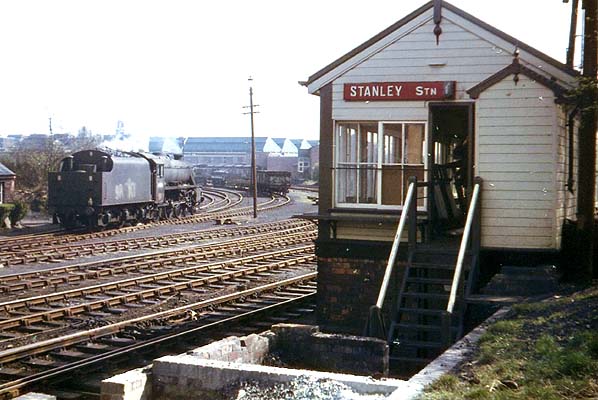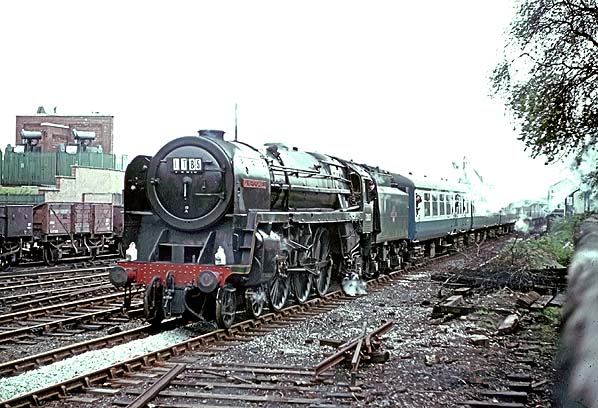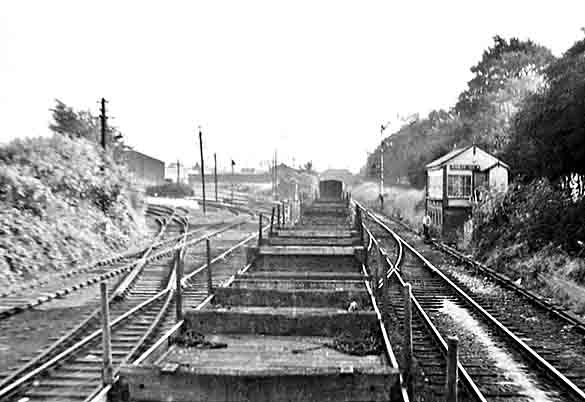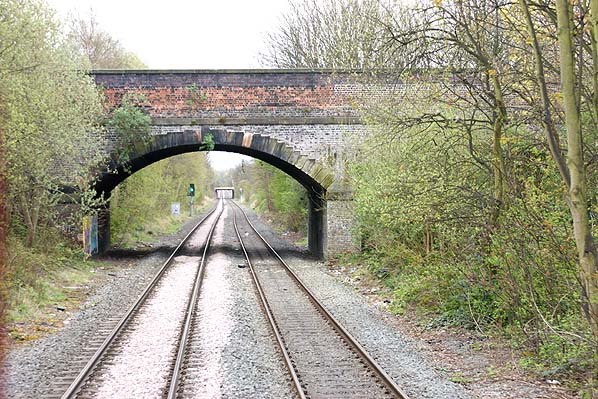|
Stanley Junction was situated on the London & North Western Railway’s (LNWR) Bootle Branch which linked Edge Hill to Canada Dock. The double-track line opened in two stages, the first being from Edge Hill to Tue Brook on 1 June 1866. On 15 October 1866 the line was opened from Tue Brook to Canada Dock but only for goods services. A passenger service had commenced with the opening of the line but initially it only ran between Lime Street and Tue Brook. Passenger services were extended northwards on 1 July 1870 when a passenger station opened at Canada Dock. On 5 September 1881 a line was opened from Atlantic Dock Junction (just east of Canada Dock) and Alexandra Dock.
A junction was formed at Stanley in 1867. Originally called Stanley Cattle Junction it was 19 chains to the north of the Stanley passenger station which had opened on 1 June 1866. It was formed when a 28-chain branch line was opened to serve the Stanley Cattle Market which lay to the east of the line. The branch had its own goods station called Stanley Cattle.
Little is known about the working of the junction in the period before 1871 by which time a signal box had been opened to control it. The box was located on the down side (Canada Dock direction) of the line just north of the junction. A proposal is recorded in a minute from an LNWR meeting of 16 October 1872 that a night pointsman be employed at Stanley to facilitate ‘late working of goods traffic in order to meet the requirements of the cattle department’. The cattle market branch must have become so busy by that time that night working of trains was required.
In 1877 works were carried out at the junction. The new works were inspected on 31 August 1877 and they consisted of new connections and new signalling equipment.
On 12 June 1901 an order was placed for a lever frame for a new signal box for Stanley Junction. At this time the Liverpool Corporation had started to build a power station at Lister Drive (to the north of the cattle market branch) and it was to be rail served. The power station branch diverged from the main line 5 chains to the north of the cattle market branch just to the south of the Lister Drive overbridge.
The new signal box had opened by June 1903 (it was recorded in an LNWR meeting minute of 12 June 1903 as having opened). The new box was also located on the down side of the line close to the junction and called Stanley Junction. The box was an LNWR Type 4 size K with a brick base and wooden cabin. The box was fitted with a 48-lever frame of which 34 levers were fitted leaving 14 spaces. It controlled the junctions with both the cattle branch and the power station branch and the lines that ran into the goods yard.
The Lister Drive Power Station opened in 1904 (and was enlarged between 1924 and 1926).
On 1 January 1923 Stanley Junction became part of the London Midland & Scottish Railway (LMS).
On 20 September 1931 a new meat market and abattoir was opened on the site of the cattle market. With coal deliveries, movement of livestock, movement of meat products, general goods from the goods yard and a constant procession of goods trains to and from the docks, Stanley Junction was a very busy place in the 1930s.
On 1 January 1948 the Bootle branch became part of British Railways [London Midland Region] (BR[LMR]). The local passenger service was withdrawn on 31 May 1948 and Stanley station was closed (through passenger coaches between Southport Chapel Street and London Euston continued to run). Despite the closure of the station the Stanley Junction signal box was renamed Stanley Station on 25 June 1950. This was probably to distinguish it from Stanley Junction in Scotland. By this time there were 42 levers fitted (although only 37 were working, five were spare and there were six spaces).
Traffic declined in the 1960s and rationalisation took place at Stanley Junction. The decline is evidenced by the number of working levers in the signal box. By 1968 this had reduced to 27 (with 15 spare and six spaces).
The Stanley Cattle station had closed by 1971 and coal traffic to Lister Drive Power Station ceased around the same time.
Stanley Station signal box closed on Sunday 10 June 1973. The junction had been removed by this time and the box was demolished.
The Bootle branch was still open in 2017 being the only surviving rail link to the Liverpool Dock system.
Click here to see Stanley station
|





 Home Page
Home Page 

